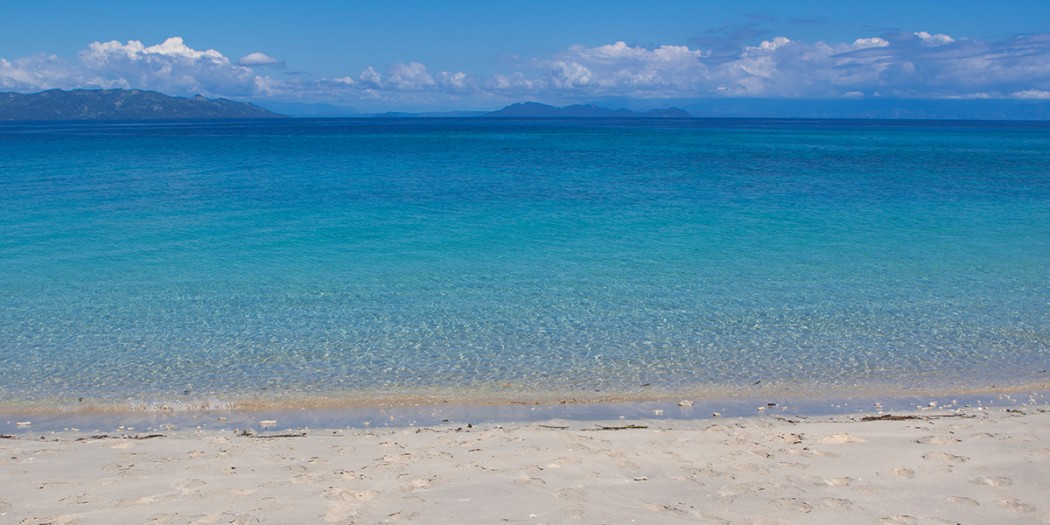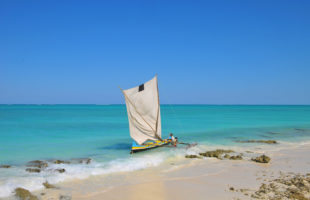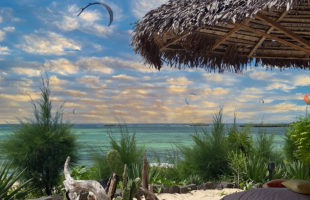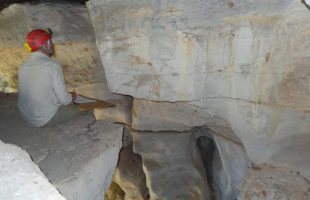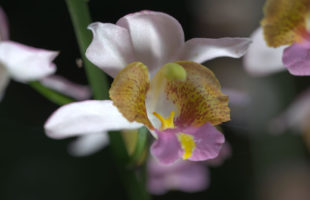Nosy Tanikely:
Nosy Tanikely means “island of little earth”, which alludes to the small area of the island. The often-used spelling “Tanihely” with h instead of k is not a spelling mistake, but only the name of the park in the dialect of the local people, the Sakalava.
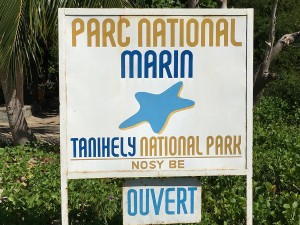
Location:
Nosy Tanikely National Park is located in northwestern Madagascar off the coast of the Diana region, a good 8 km southeast of the famous large island of Nosy Be, in the middle of the Mozambique Canal. The island can only be reached by small boats, either from Nosy Be or from the mainland. There are several flights a week from the capital Antananarivo to Nosy Be. If you don’t want to fly, a rented car with an experienced driver is the means of transport of choice. The 900 km from Antananarivo to the coast should take at least two days. In the harbor near Ankify (Doany) there are small ferries that sail daily to Nosy Be (only for pedestrians). From Doany the crossing by motorboat takes about 45 to 60 minutes, depending on the swell, from Nosy Be it takes only 30 minutes to Nosy Tanikely. Caution: Motorboats are relatively expensive for individuals – it is, therefore, worth joining a group and clarifying the price in advance.
Information about the national park:
Nosy Tanikely National Park has only been in existence since 2011, making it one of Madagascar’s smallest and youngest national parks. The park itself is only 3.41 km² large, the island as the centre is uninhabited since primeval times. A fantastic, mostly completely untouched coral reef stretches around it over a width of about 700 m. Fishing, harpooning, and fishing with the net are forbidden here since 2010. The south of the island has a long, white sandy beach under palm trees, directly at the turquoise-blue sea, to which one arrives by boat. The beach is very shallow into the sea and remains no deeper than four or five meters over 200 meters. The beach in the east of the island, on the other hand, drops steeper and merges directly into the deep sea. In the north and west, there is a rocky coast and in the middle of the island, there is a lighthouse, which is still in operation today. A small circular path leads through the tiny secondary forest of the island.
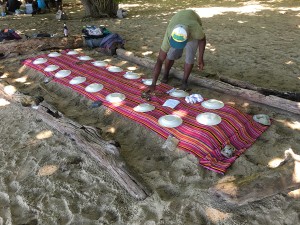
Climate:
The climate is very warm all year round with average temperatures above 25°C and lots of sun. Short trousers and T-shirts are enough for the visit but don’t forget plenty of waterproof sunscreen and longer clothes for snorkeling. In the cyclone season in January and February, it can rarely happen that no boats go to the island due to strong swell.
Infrastructure:
The island itself has a sanitary house with toilets and showers, running water, and a small office where you pay your entrance fee. Accommodation is available exclusively outside on Nosy Be or on the mainland. As Nosy Be is one of Madagascar’s best-developed tourist areas, you will find the right accommodation for every budget. Also in Ankify on the mainland, the choice of hotels and lodges is good. Unfortunately, overnight stays are not possible on Nosy Tanikely itself.
Picnics or a delicious lunch directly on the beach with lobsters, fish, and rice can be organized by the guides – so you can spend the whole day on the island and fully enjoy the snorkeling experience. Scuba diving is only possible from Nosy Be, there are several diving schools over there. Snorkel equipment, however, can be hired directly from Nosy Tanikely for a small fee (15,000 Ariary for fins, snorkel, and mask). A local guide for snorkeling is not obligatory but can be very helpful if you want to see certain animals.
Fauna & Flora:
Nosy Tanikely is a marine national park, which means that almost all of the island’s biodiversity can be found in the water. On the island itself, there are some smaller reptiles such as shield lizards and panther chameleons, huge numbers of hermit crabs, and a small colony of black lemurs. A colony of fruit bats has also settled on Nosy Tanikely.
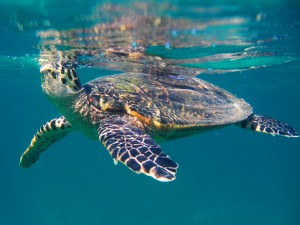
But underwater there is much more to see: The colorful, still completely intact coral gardens reach a few meters before the beach and accommodate an unbelievable abundance of fish, starfish, sea urchins, sea cucumbers, and other sea creatures. Between huge corals, surgeonfish, pufferfish, and groupers find a home. Whole shoals of fish pass by dazzlingly colorful, and with the underwater camera, you sometimes don’t even know where to take pictures first.
A special highlight is the sea turtles (mostly Caretta caretta and Chelonia mydas), which can be found in large numbers around Nosy Tanikely. Older specimens in particular are often not impressed by the floating snorkellers above them, and you can then observe the animals up close. From time to time you can see dolphins in the sea, and even whale sharks are spotted between Nosy Be and Nosy Tanikely.
Nosy Tanikely is certainly one of Madagascar’s most beautiful places for snorkeling and diving. Even those who snorkel here for the very first time or have little experience in diving will find a true underwater paradise.
 MADAMAGAZINE Your Magazine about Madagascar
MADAMAGAZINE Your Magazine about Madagascar






